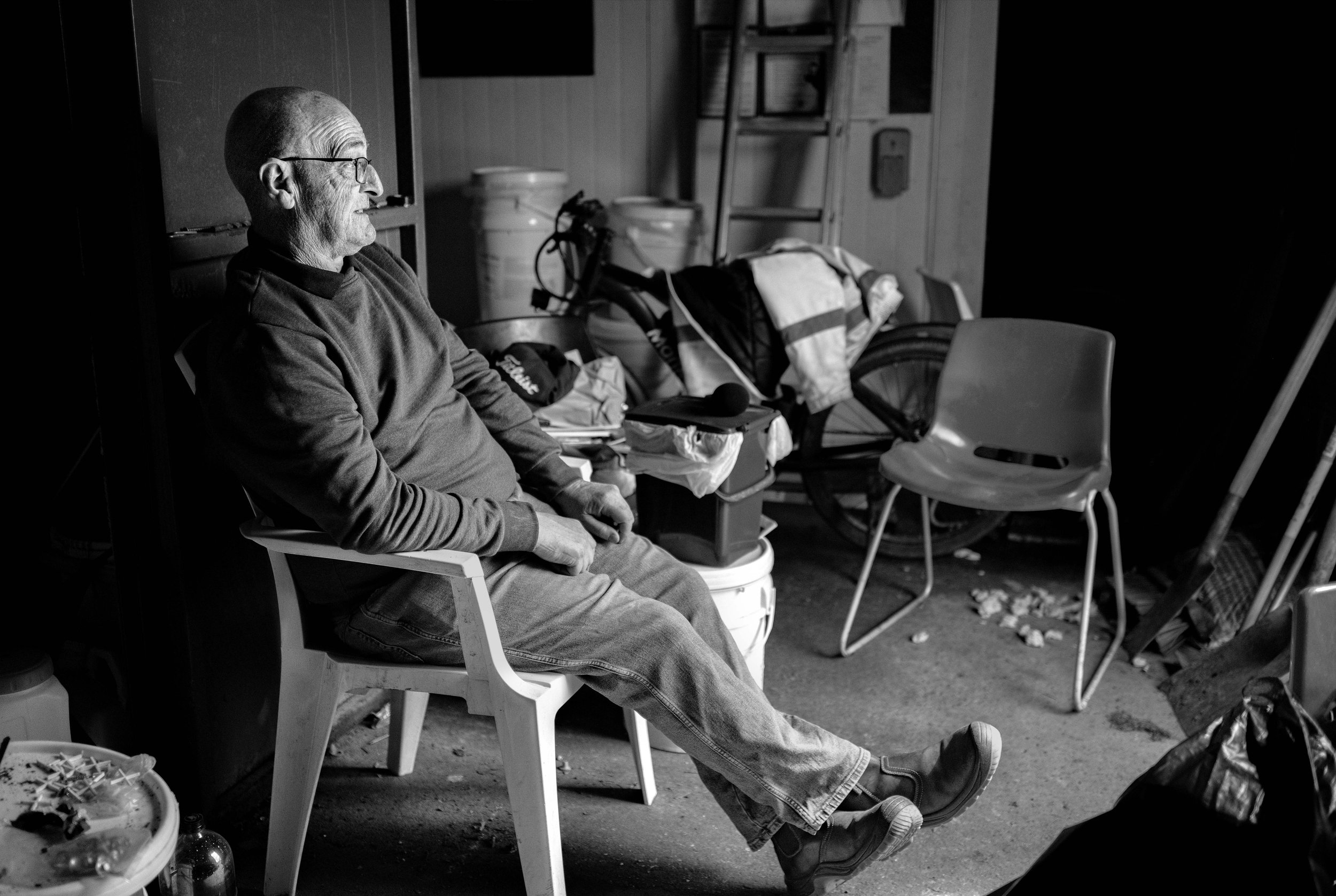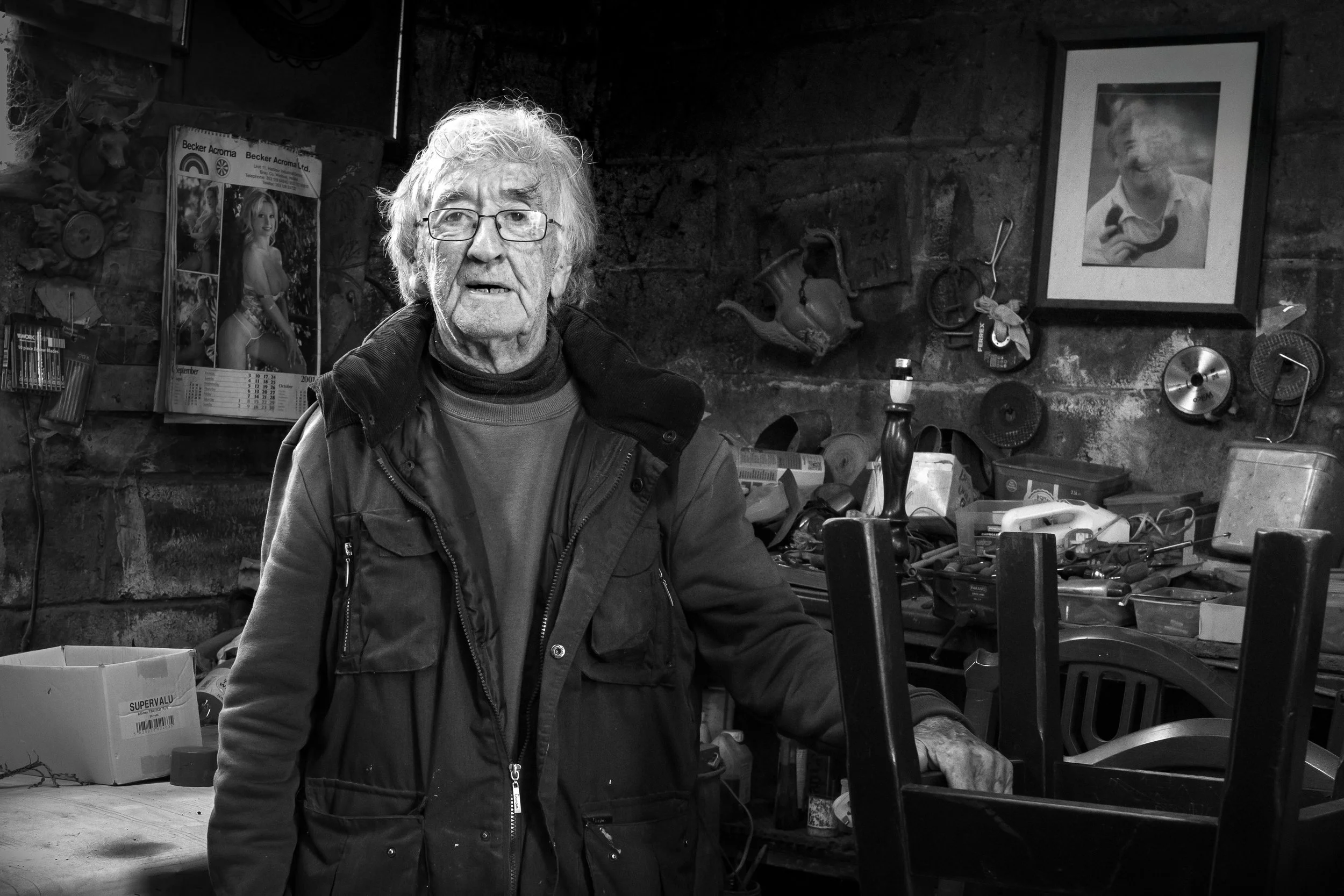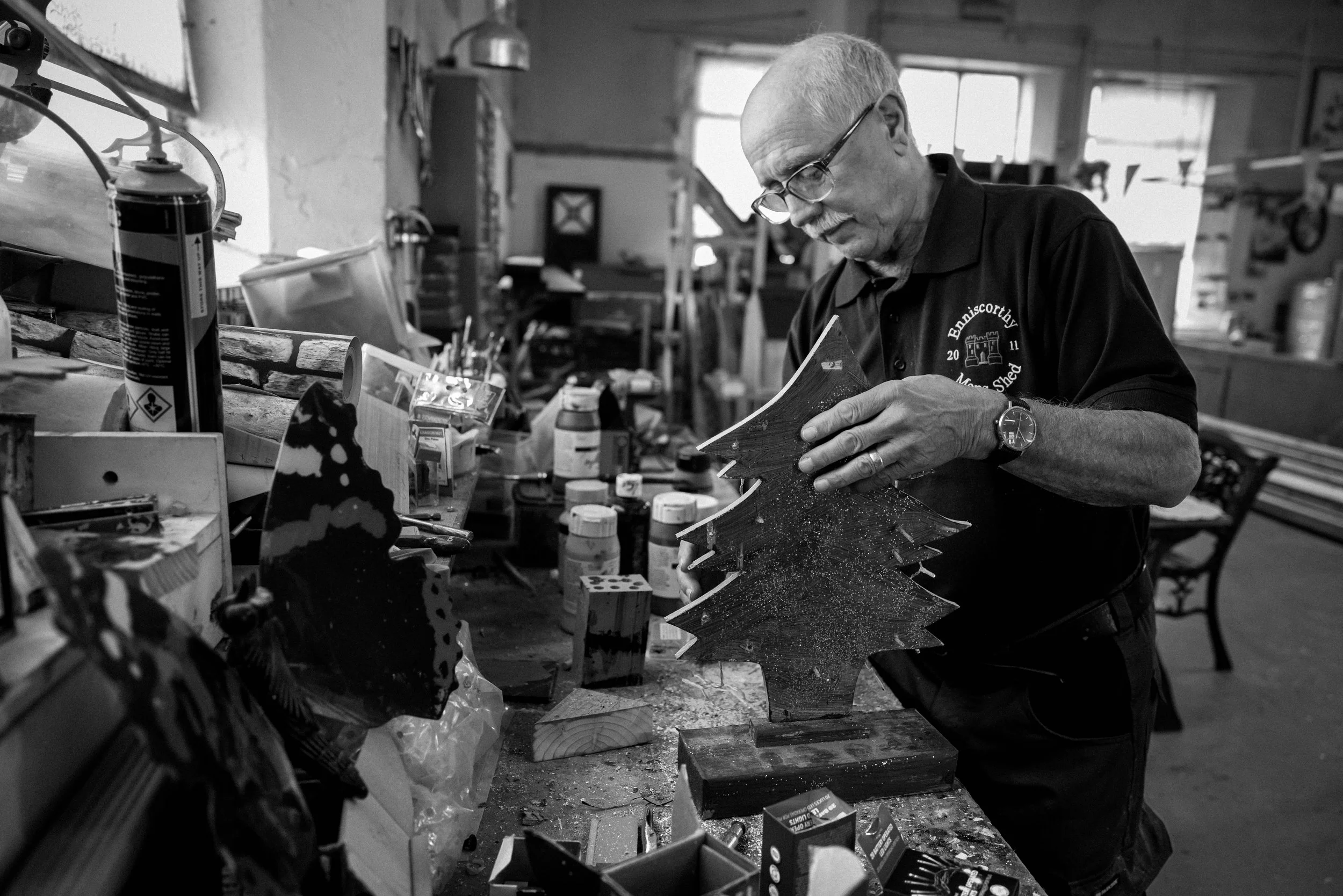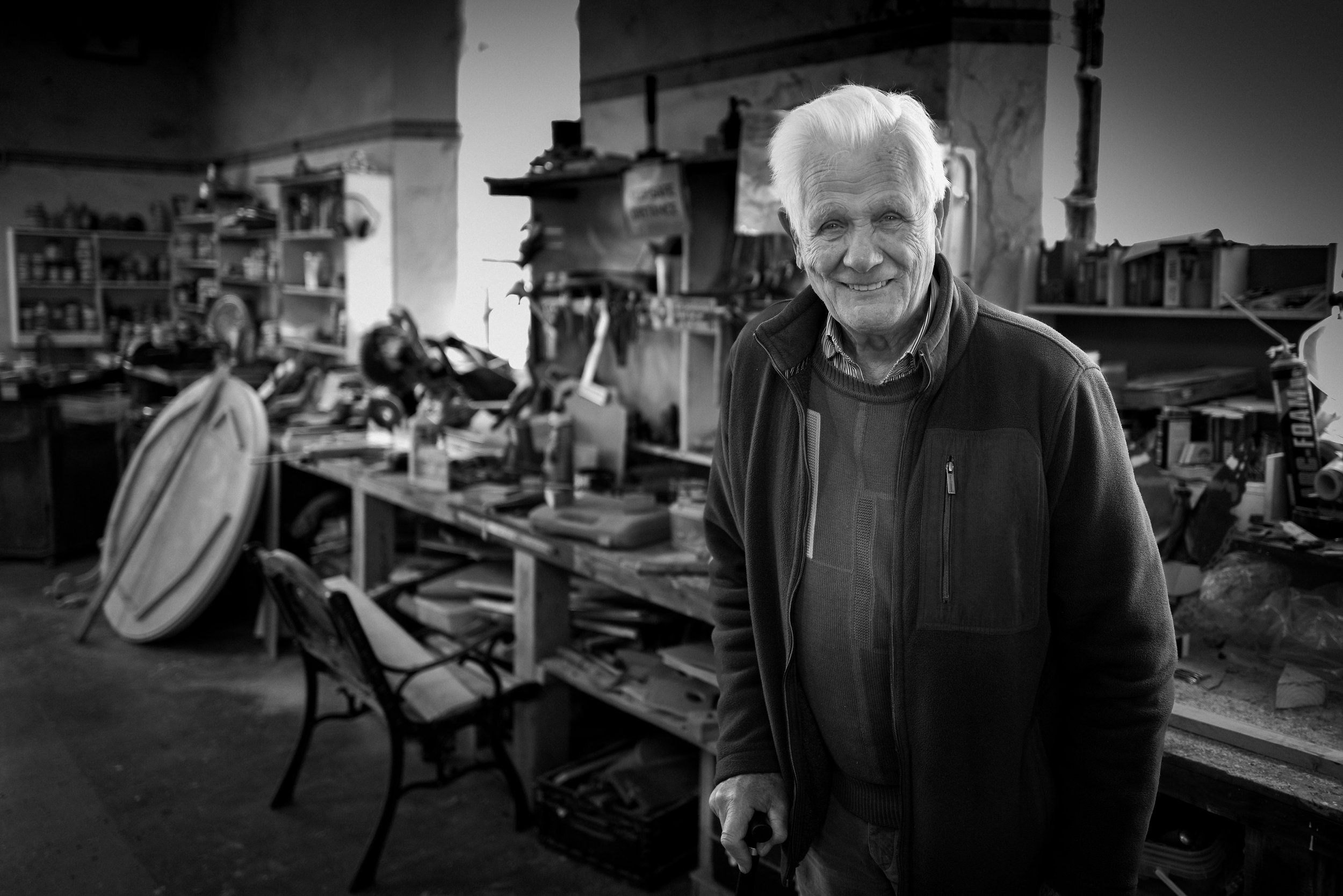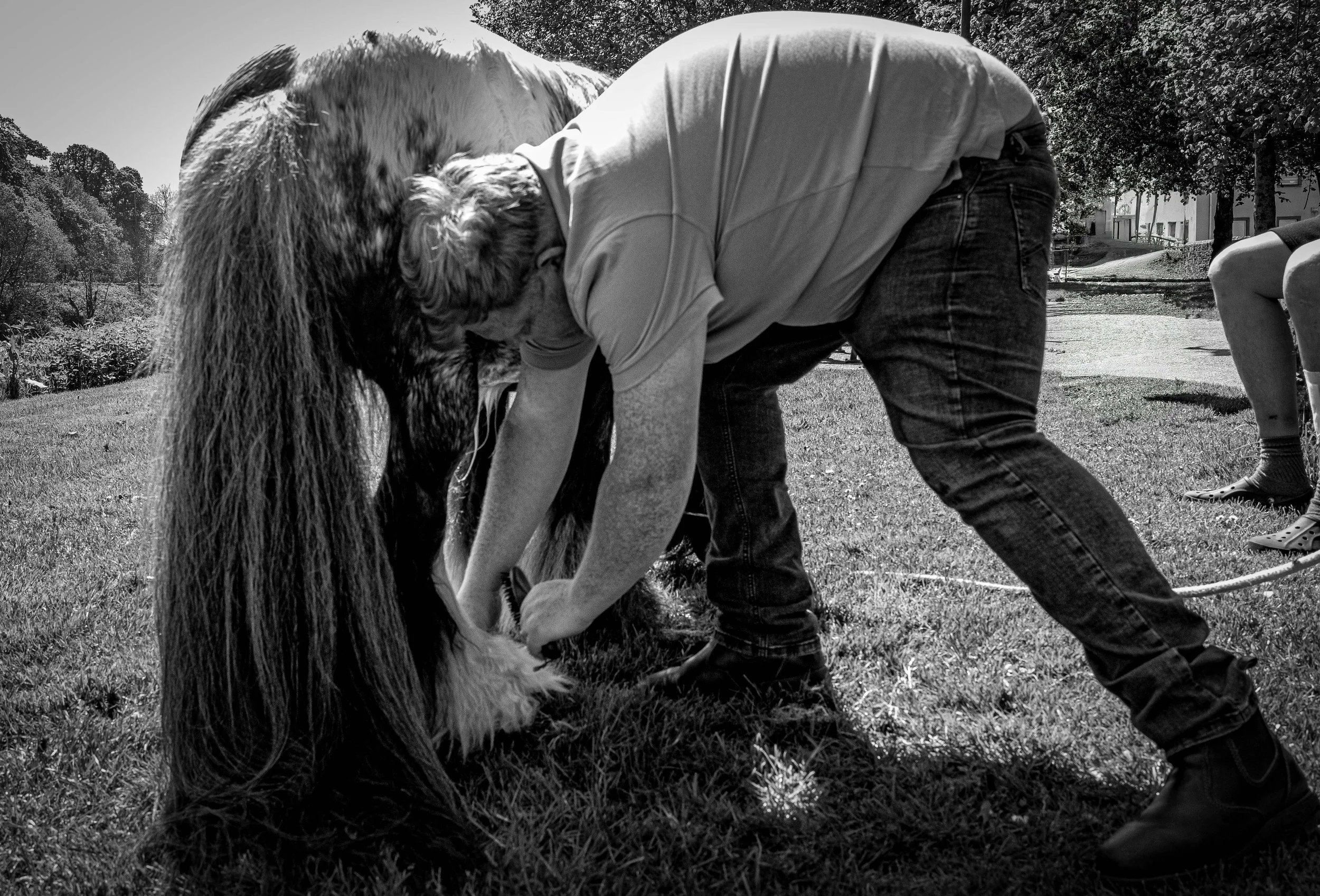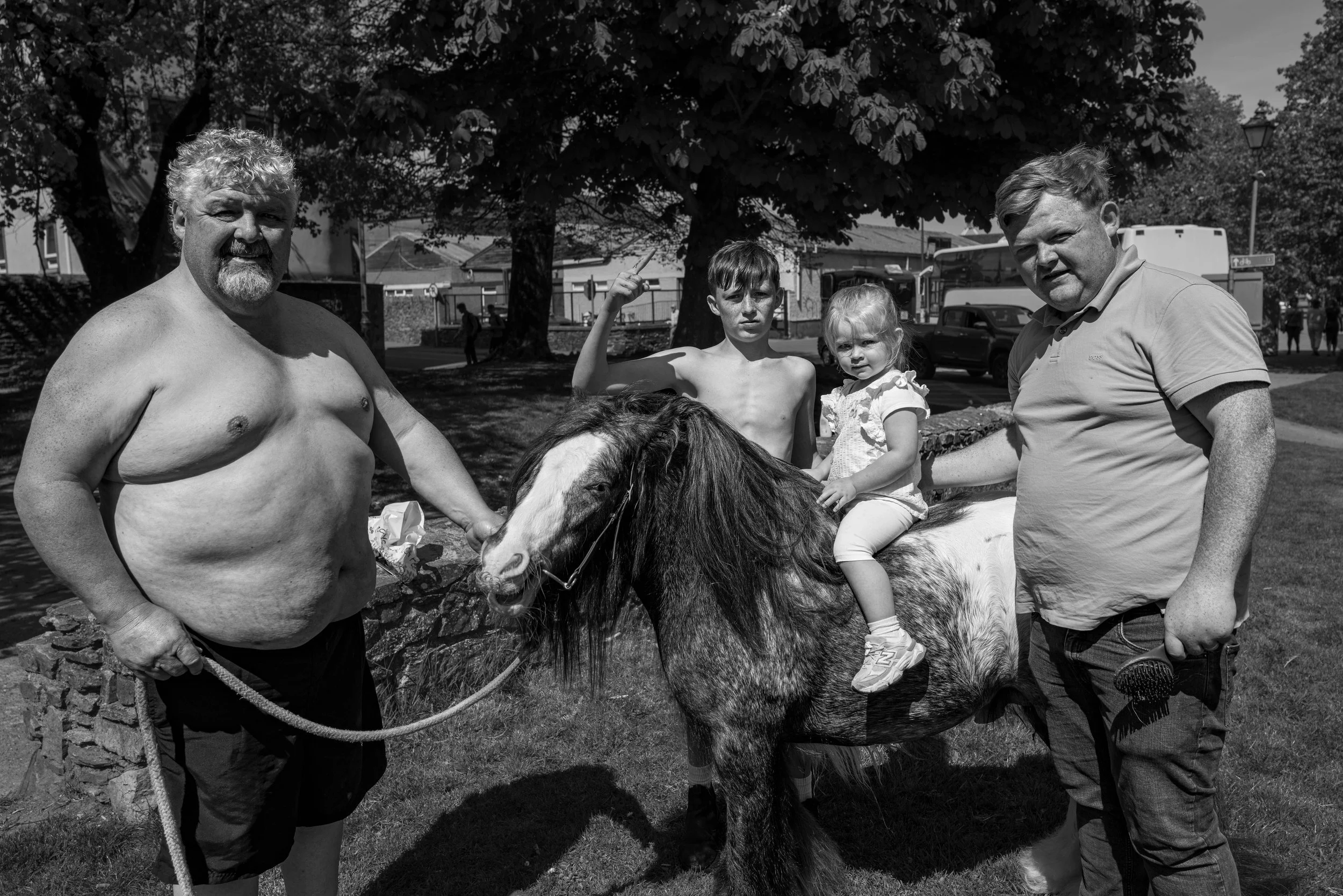Our Town, Observations and Voices of Enniscorthy
Our Town, Observations and Voices of Enniscorthy
This project continues the story that began with Our Town, a photographic exploration of Enniscorthy’s streets. Where Our Town captured the buildings across the town, this new chapter turns towards workshops, clubs, and small community spaces where life unfolds quietly but meaningfully.
Supported by Creative Places Enniscorthy and the Arts Council of Ireland, Wexford County Council, and the Wexford Arts Centre initiative, and funded through the CPE Project Award, this documentary work gives voice to those who shape the spirit of Enniscorthy every day.
A chance meeting beside the pool
I parked in the car park at the swimming pool, picked up my camera, and was about to head out towards the street to see who I could meet, and who I could talk to, about Enniscorthy now and in times past. I noticed a little work shed across the carpark with it’s door open. It is beside where there used to be a nightclub, Movitas. I took a chance that there would be someone there, as the door was open and swung gently in the wind.
Who I met in there was Brian Redmond. Brian meets the morning early; the pool has people in from 6 a.m. He minds the grounds he’s looked after for “the last two, maybe two and a half years”, and steps inside when there’s a job to be done. “Some days, five schools pass through those doors. Until recently, a committee ran the place, but about six months ago the council took it over.”
He tells things straight. Next door to the pool there is a derelict site and plans have been drafted for their repurpose, but “planning surely won’t be granted.” To his eye, they’re dilapidated. He isn’t against heritage so much as he is for safety. “Buildings shouldn’t be left to fall on people. They’ve been told not to apply for planning because there’s listed buildings there”
His read on the town, is the same: affectionate, exact. “Too many charity shops and cafés, and not enough places to buy what people actually need.” Gorey, he mentions, “has twenty shops that you might go into where Enniscorthy has four.”
Brian Redmond remembers a time when “you wouldn’t see the bottom of the river through all the fish”
Work here has disappeared in chunks, too. Brian spent eighteen and a half years at Wexal Aluminium out the Dublin Road, and “there was another aluminium outfit behind the post office. Those big employers are gone now. No major employers in the town anymore” he says. “No manufacturing plants taking on eighty or a hundred people at a time.”
Festivals tell a similar story. We speak about the Blackstairs Blues, the Rhythm and Roots festivals, the Rock and Food festivals, and further back to the Strawberry Fair that ran a full week, with the bandstand by the quay and events spread out across Abbey Square.
“They’re all spread out now,” he says, “over one weekend, and there’s no central point.” He remembers a time when “every man, woman, and child in the county, at some stage, would have attended the Strawberry Fair when hundreds and hundreds of people set upon the town over the week-long festivities.”
When asked about the river, he becomes the angler he’s been for roughly 50 years. “There was a two-year catch-and-release spell for salmon, but numbers are still nothing like years ago. Whatever damage is done seems to happen before the fish reach the river. Sea trout have vanished from stretches once considered the best in Europe.”
He remembers the old depth of the river. “As a young lad in a boat, there were parts where the fishing pole wouldn’t reach the bottom and we had to row across.” He now points to sections between the two bridges that are very shallow, with the water level dropping day by day. “You can walk across the river in places. Dredging used to happen the whole way down the river.” More recently, someone even offered to do the dredging and keep the gravel, but it was refused, Brian tells me.
He’s one to notice the little things too: a tree “still lodged against the old bridge from a flood that will cause bother in the next one.”
Brian sits and looks out across the swimming pool carpark
Listening to Brian, I get a sense of how caretaking ranges from opening up at dawn to maintaining a town’s working memory. What has been maintained, what has slipped, what could still be saved.
His story tells me of honest work. The river and its great potential, and about the people who still open doors before the rest of us arrive. But for now, his part in this, reminds me that places don’t look after themselves. It’s the people.
A conversation with Brendan Earle
Brendan Earle’s workshop is a space where every tool has its place. Pliers, clamps, hammer, vice grips, and a dartboard on the wall. Brendan moves through it with ease, like someone who’s been fixing and making things his whole life. When he talks about horseshoes, his voice carries that same steady purpose.
“Horseshoes isn’t just a pastime” for him. It’s a way of life. Its own community. A way of measuring the years. “Few clubs are left now in the country,” Brendan informs me as we sit down for our chat. “Kildare, Donegal, Wexford, Galway. Once there were dozens or more. This was back in the early 80s.”
Brendan Earl shows one of his championship winning Horseshoes
The decline doesn’t surprise him, but it bothers him. What used to be a local league of 40–50 players has now diminished to less than 10. He speaks to me as a past league organiser, someone who put as much time and effort into the organisation of these leagues as he did over the years into his training. “For a league to work, the plan needs to be straightforward,” he outlines: “Wednesday nights at eight o’clock, a 10-week league, insurance, registration, all sorted with a small fee to keep things covered. Only a tenner,” he says.
There’s no grandstanding about it, just the quiet certainty of a man who knows that traditions only survive if someone minds the details. He has represented Ireland 29 times all over the world, but he doesn’t linger on medals or memories. The pride is in the doing. “It’s the only sport I loved,” he tells me. And you believe it completely.
In conversation, he switches easily between the logistics of running a league and the details of his own past: how he “trained every moment” he had, how he “became the best because [he] put in the time and effort.” The only time he wasn’t training was when he “was at work, eating or asleep!” There’s humour too in his conversation, the dry kind that makes you feel like you’ve joined the club without realising it.
Brendan in his workshed in Enniscorthy
Standing in his shed, surrounded by old tools and trophies, I realise that Brendan’s story isn’t just about a game. It’s about keeping rhythm when the world moves on. The horseshoes might not ring as often as they used to, but their memories still matter.
Enniscorthy Mens Shed
I got in touch with the Enniscorthy Men’s Shed, having found their contact number on mensshed.ie. The first phone conversation I had was with Richie. “No problem at all,” he says when I ask if it would be OK to drop in to them. He “wouldn’t be there” himself, “but Matty would.”
The following Thursday, camera in hand, I made my way through the doors of what once were the buildings that housed the wards in the old St John’s Community Hospital on Munster Hill. The busy noise of sanders and saws was interrupted by someone calling out to me, “Come in, you’re grand.” That was it, I was in.
Matty is the man I met, and he told me about how “it all started in 2011, in a tight space underneath the 1798 Centre, with one way in and one way out,” and how they “moved to a safer, bigger space” thanks to St John’s. “Very, very lucky,” they said, and the gratitude was obvious.
I could already sense the welcoming and open nature of the members. The mornings run at ease, no pressure, no panic. Doors open about 10 a.m. and generally shut at 1pm, and the members “come and go as they please". Some days five lads, other days eight or ten.” No pressure, but plenty of purpose. “You’re under no obligation to stay” but “It’s very good for the mental health”
Work finds you quickly, and there is always plenty to do. A line of cast-iron garden seats waited for new slats and paint—the kind of job that’s simple only if you’ve done it before. On another bench, small winter garden ornaments and things: Christmas trees, snowmen, cribs, little trees with lights. All stacked and ready to go.
Matty prepares a Christmas Ornament with lights
We “don’t advertise our wares—charity rules. People find us through Facebook and word of mouth” Matty continues, and “whatever money comes in goes back into the room”: consumables, safety kit, and “moving to cordless tools to keep cables off the floor.”
The shed is also a gallery of ingenuity. On a shelf, I was shown a model of St Aidan’s Cathedral, one of Enniscorthy Castle, and a model of the Colosseum. “We learn off each other,” someone said, and it fit everything I was seeing—skills shared and passed from one to another.
I started to learn names. Richie, the chairman, usually camps in the corner where handmade pieces wait their turn. Pat has the kind of competence that makes hard things sound easy. “Tony and Dan drop in now and again”, which in Shed-speak means they’re part of the furniture even when they’re not there.
Another member, Martin, paints. He tells me he “began during COVID” and now turns out paintings that “take 15 to 30 hours to do, in acrylics and oils”—gifts that he passes on to his children and grandchildren. And there’s also Oliver, 86 years of age, once with Telecom Éireann. After the sad passing of his wife, he started coming in. The room feels right with him in it.
Oliver is a regular in the Enniscorthy Mens Shed
What I noticed most was the care, the way care hides in plain sight. Guards on the power tools sit where they should. Dust is managed and the floor space is kept clean and swept tidy. Safety here is how the place is laid out, and the way a hand pauses before a switch is clicked on.
By one o’clock, pieces had moved from rough to ready. Jokes have landed just short of the line, and the kettle had done its work. If you’ve never been in a Men’s Shed, that’s the heart of it: make something together, and go home feeling steadier.
Paddy, Martin and Matty - members of the Enniscorthy Mens Shed
I came to learn how it works, but I left thinking about the people who make it work—names I can now picture at their benches, and a room that keeps quietly turning mornings into something useful.
Two Friends, Two coffee’s and One Happy Dog
Damien and Mary were mid-conversation when I spotted them from across the street on one of the hottest days of the summer. I was walking down Rafter Street and I paused. I asked if it would be okay to sit and chat with them for a couple of minutes. They were quite happy to allow me to.
Mary told me she’s “from Dublin, now six years in Enniscorthy.” And she loves it. “The town has everything.” What she meant was simple: in Dublin, life is spread out and stitched together by long journeys. Here, everything lives close together.
I asked if I could take a photograph. “Fire away,” they said, and the mood stayed casual. There was a gentle joke amongst them about whether “the camera might break!” A passing “Hello Damian!” tossed over a shoulder as someone they knew passed by. I took a headshot of each and promised I’d send them the pictures. They were happy with that.
Damian with Kia enjoying the sun on Rafter Street, Enniscorthy
They waved me off with the good-natured patience of people who treat interruptions as part of the day. I walked away thinking about how quickly a table can become shared space. Damien and Mary allowed me, a stranger, into their small circle without ceremony. It felt like warm and engaging and proof of how street life still works here. A brief trade of the weather, place, and names. Two portraits taken, everyone carrying on.
Mary enjoying the street life that Enniscorthy has to offer
A Riverbank Shared
I came upon the family by the Slipway along the Promenade just as the brushing began. Quick practiced strokes to spruce the two-year-old up before he went back into the trailer after being washed in the river. One man worked the brush while another kept the rope steady. Two kids hovered around, all knowing what needed to be done.
The gentle brushing of a pony on the banks of the Slaney in Enniscorthy
They didn’t make a fuss about me or my camera. “No problem,” they said when I asked if I could take some pictures. We spoke little and I took a few frames and promised I’d get the photos to them, and left with a phone number in my pocket. One of the names stayed with me—Mick—tucked into my notes I had made as I walked away. The rest of the names were blurred and I caught myself wishing I’d asked better questions.
This kind of work teaches you that the picture can be quick but the listening can’t be. Still, the welcome they gave was clear and easy, and the photographs carry that welcoming. Looking back through the pictures, I keep returning to the gentle care they showed.
Mick and the Pony, a quiet moment shared
The riverbank wasn’t a line between “us” and “them”. It was a commons held together by a rope, a brush, and the care shown to a good young horse. Living harmoniously can sound grand from a podium. Here it was ordinary. Space offered and accepted. Curiosity met with courtesy. Difference softened by the work of gentle hands. If there’s a divide in town, it narrows in moments like these—when we meet in the open and let the day be simple.
A proud family of 3 generations
On a Bench Over the Town
This last morning I walked the long way around town on purpose, Cathedral Street to Slaney Street, across into Temple Shannon. I ended up sitting on a bench with a good view back over the roofs and shopfronts, the kind of perch that lets you listen to your own thoughts.
I spoke along the way to a lady who declined my offer or request for a photograph, but was quite happy with the conversation. She talked about the town and how it used to hum: milk in glass bottles, sides of pork shouldered across the street, an old weighing scale in the shops that weighed everything from bacon to sweets. She spoke about Abbey Square and how it used to be the centre of the town. No road through the middle; you could feel the centre then, a place the town agreed to meet. The new road is a marvel for getting around; it is also, she and I admitted, a better way to pass by. Efficiency shortens journeys and sometimes thins communities.
We spoke easily and I listened about the decades past. Open fires in farm kitchens, the crane for the pot, a baking pot black from use. “Harder work back then”, she said, “with maybe a little more pride”. Fields that once held their own line, now joined into big, efficient rectangles, sprays and insecticides part of the new logic, with their runoff finding its way into us. She remembers the introduction of plastic and how much of a change it was at the time and we spoke of the damage it causes to our local wildlife and to us too.
Her examples never turned preachy; they were the sort of observations you collect from a lifetime of doing things the long way. People came into the story too, not as complaint, just as conversation. The rumour of ads as far away as Malaysia inviting workers to Ireland. Populations shift, doors open and close, a bar that feels emptier than it used to.
Her hands told their own stories. Knuckles thickened with arthritis. A trace of black under a nail, the way work sometimes marks you. Not dirt, but wear.
As I sat on the bench and tied everything together what stayed with me wasn’t any single story, but the way they echoed one another. A league organiser minding fixtures, a caretaker watching water levels, men easing a day along with timber and laughter, a couple holding a corner of Rafter Street, a family brushing down a young horse, an older woman working through her day. Each, in their own patch of Enniscorthy, was tending to something—memory, skill, animal, street, river, neighbour. Put side by side, these small acts are actually what holds a town together, not the streets and buildings, but the people quietly keeping things going.


